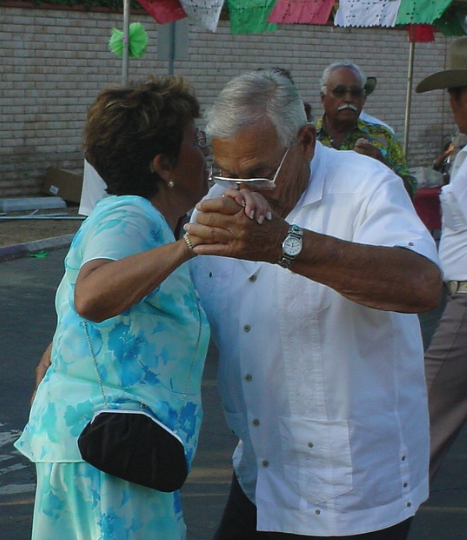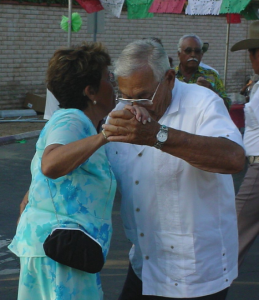Elderly Latinos Thrive In Latino Communities

 Turns out that the best thing to prevent frailty among elderly Latinos is more Latinos. Access to health care, transportation and sidewalks also help, but by and large the best thing for our viejitos is community. At least that’s what a new USC study found.
Turns out that the best thing to prevent frailty among elderly Latinos is more Latinos. Access to health care, transportation and sidewalks also help, but by and large the best thing for our viejitos is community. At least that’s what a new USC study found.
The study, published in the Journal of Aging and Health, concluded that
older Mexican Americans who live in ethnically dense Mexican-American neighborhoods have a lower risk for increased frailty than those who live in more ethnically heterogeneous neighborhoods.
“Many times we assume that low-income neighborhoods are bereft [of basic needs],” said lead author Maria Aranda, associate professor at the USC School of Social Work and the USC Edward R. Roybal Institute on Aging. “This study points to the idea that – at least in areas with a high percentage of Mexicans and Mexican Americans – there are factors that are protective.”
Those factors, according to Aranda, are a sense of community cohesion and a sharing of information about health related resources.
Mexican Americans may be benefiting from the informal exchanges of information and knowledge that are facilitated when people live in communities with others from similar cultural and socioeconomic backgrounds, Aranda explained.
Frailty is defined as “a geriatric condition generally characterized by unintentional muscle mass and weight loss, weakness in grip strength, feelings of exhaustion and low levels of physical activity.” In light of the fact that by 2050 Latinos are projected to be the largest minority elderly population, the study and its finding are relevant and timely. But they also paint a particular cultural picture, where the special place and reverence that the elderly have in Latino communities is seen as a positive, life affirming tradition.
Basically, we know we care for our viejitos, and this study just makes it official. Case in point is my own 91 year-old father. He lives on his own by his own volition, but he has a community of family, neighbors and health care workers that look after him, constantly. Dad would rather live alone, that’s just his way; but his life is filled with visitors and care, and that’s our cultural way.
Another valuable thing that this study has done is bring the concept of frailty to a prominent place in the healthcare conversation.
“We need to integrate frailty assessment in primary care and public health systems,” Aranda said.
Frailty affects 15 percent of individuals who are 65 and older. As the population in the United States continues to grow older, the number of frail adults is estimated to dramatically increase.
This coming year’s election conversation is sure to bring up health care; this study and its findings shouldn’t sit on a shelf.
[Photo by Mexican American Opportunity Foundation]
